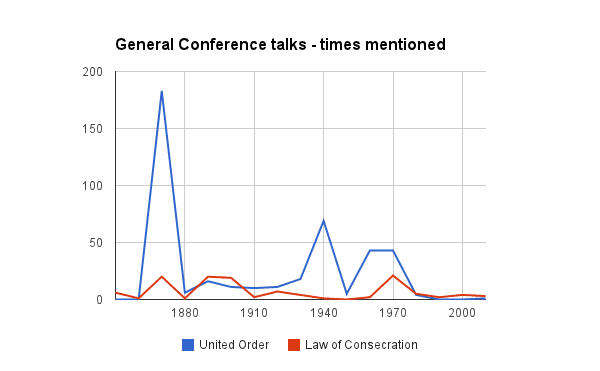The Filipino widow’s mite
The widow’s mite is a poignant story, but one in which we might be missing the point Jesus meant to convey. What if instead of admiring the woman’s sacrifice, he was instead lamenting that her condition was countenanced by the people all around her, particularly those with substantial means? What if he was criticizing both that the rich garnered public approbation for their generous donations made out of their surplus, and that the woman, after consecrating her all, was left with nothing?
In the December 2012 General Conference, Elder Teh gave a talk in which he ended with the story of a 73 year old widow and her mite. The widow had recently endured an earthquake that destroyed her house and killed her daughter and grandson who were living with her at the time. The widow was now alone, living in a tent, and had gone back to work to feed herself. She was quoted with admiration as affirming that she still paid her tithing.
While we were in the Philippines this past summer, we stayed near this old Mormon woman’s church district. Many members’ homes had been destroyed, and even nearly a year later were still in shambles, with members still living in tents or hanging up plastic sheets to protect themselves from the elements.
When we arrived, we met with a senior missionary couple, who, after learning that we were interested in helping to rebuild, sincerely asked for assistance in helping particular members (including the district president) rebuild their homes. Among those requests, they asked for help for this sister who had just recently been quoted in general conference as being a faithful tithe payer. It was six months after her home was destroyed that she was finally helped in the rebuilding of her humble home, and only with assistance from outside the church. We were asked to help finish her home by contributing windows.
Consecration and Stewardship
This wonderful old Filipino woman was measuring herself up to an ancient religious practice – the law of consecration. Simply put, the law of consecration requires that we consecrate, or give, everything we have to God, in recognition that it is his to begin with. Mormons believe that the consecration of property to God fosters ideal living conditions, a state characterized as a society living with one heart and one mind, in righteousness, with no poor among them.
Mormons also believe that, in different periods throughout the history, God has inspired people to put this idea into practice. Mormons typically identify Enoch, early Christian saints after Jesus’ death, the Nephite people just after Christ’s visit to that Book of Mormon people, and the Mormon saints in the early days of the restoration, as groups of people who have attempted to implement the law of consecration.
The early Mormon attempt at living this law of consecration was eventually called the United Order. Its purpose, as decreed by the Lord to Joseph Smith was “to provide for my saints, that the poor shall be exalted, in that the rich are made low.” The practice, in essence, was that each member entrust, or consecrate, all of their property to the the Lord’s agent on earth (the bishop). The bishop and the member would then figure out together the needs and wants of that member, and then deed back to the member sufficient property to meet those wants and needs.[1] This deeding back of property to the member was known as the law of stewardship, whereby each member would be accountable to the Lord for its use, and any excess should be given back to a storehouse to care for the poor and the needy
This practice was not common, but was piloted in various communities over the years after being revealed to Joseph Smith in 1831. Even after 1839, when Joseph Smith received the revelation that we typically associate with tithing, Mormon people and communities were eager to live this higher, celestial law, and were encouraged to do so by church leaders through the 1870s. After repeated failures, Mormon saints were eventually counselled that this law of consecration was to be implemented at some later date because of the “imperfections” of the saints and their “relations with the world”.[2]
Within Mormonism, the concept of tithing took over from the concept of consecration and stewardship – a fallback position due to unrighteousness. Many people who grow up in the church learn that tithing, and its companion fast offerings, mainly act as a preparation for a time when we will eventually live the full law of consecration. [3]
In this sense, tithing and fast offerings correspond to consecration and stewardship, but in a kind of baby-steps way. The system of fast offerings, in particular, speaks to the Lord’s purpose in instituting the law of consecration – taking care of the poor among us. A latter-day saint who is unable to meet the necessities of life is supposed to approach the bishop, who uses fast offering donations from other members to care for the member in need. The fast offering and welfare assistance program has been successful in many ways. Members around the world are given aid in times of need. Growing up, my own family was helped by fast offerings assistance when we found ourselves in difficult times.
Moving from the Law of Tithing to the Law of Consecration
Yet, the 73 year old widowed sister in the Philippines remains without a home for months, the cost of which to rebuild would be less than one month’s rent for a modest home in the United States. This situation, of members going without basic living necessities (including being able to adequately feed their children), is not just an exception to the rule.[4] How does this happen?
There are a number of practical, institutional explanations we could turn to:
- other members in the branch are in similar conditions, so their position is relatively normal – we don’t need to supply a person in a poor country with a standard of living of a rich country;
- fast offering assistance for a given ward or branch is capped and related to local standards to some extent, and exceeding that cap requires successive requests to the stake/district and the area presidencies;
- a bishop might hesitate to give out more in fast offering assistance than his ward takes in, even if most members of the ward have actual, pressing needs, because of a feeling that his ward is not self-sufficient.
Maybe, though, the real reason why we do not adequately care for this widow is that we have forgotten that the “baby-steps” law of tithing is not a permanent replacement for the law of consecration.
In fact, we talk about the law of consecration, and the modern day implementation of it, the United Order, much less than we used to. Below is a graph that represents the number of times either concept is mentioned during talks in General Conference. During the past 30 years, the phrase “United Order” was only mentioned three times in general conference, and two of those times was by Henry B. Eyring. [5] The simple graph below represents how often our leaders speak about these concepts, which we can probably use as a proxy for how often we as members discuss them.
It should be uncontroversial that the law of consecration is important to us as Mormons, given the emphasis placed on it by Joseph Smith, the attempts by Jesus’ disciples to live it after his death, and the status given to those societies that actually practiced it in the Old Testament and Book of Mormon. Also, we covenant in the temple ceremony to accept the law of consecration. What sometimes is controversial, however, is how we should move in that direction. The two periods (1940 and late 1960s) where the United Order was mentioned a lot in conference talks were likely attempts to adequately distance it from communism and socialism.
If we want to move the church towards a society like Enoch’s or those Nephites living after Christ’s resurrection, we need to set our vision on that goal and proactively search for ways to accomplish it. Recently, launched by a talk by Elder Bednar, members have been invited to “sweep the earth” with messages of the church and the gospel. Implicit (and maybe even hidden a bit) in that message is the idea that Mormonism has as its long term focus a world living as one, with no poor among us. Making explicit that idea and direction is incumbent upon us, and will put us on the same team as many others currently working for a better world with less inequality.
As members, we need to re-invigorate a discussion of what it means to live with no poor among us, and shrug off political debates that tend to creep in whenever we talk about the rich and poor. We also need to rid ourselves of geographical constraints that limit our vision of a celestial society. If we erect boundaries between the rich and poor Mormons that mimic the current geo-political boundaries, and invite into our discussions the philosophies of men to explain why some countries are poor and some are rich (and implicitly why the citizens thereof are the same), we have failed to internalize the power of God. That some countries (and people) are rich and some are poor is certainly not the work of God. [6]
In our discussions about the law of consecration, and about having no rich or poor among us, we need to have the right context. If we are to fill the earth with the message of the gospel, we need to think in a global context about rich and poor. At this point, a conversation about whether an unemployed member in Utah should have his cable television paid for by fast offering assistance is just a distraction.
What we really need to be worried about is the 73 year old mormon widow living in a tent. There is a lot of low hanging fruit that we can attend to until we are sufficiently humble and Christlike to deal with fine lines. Any mormon missionary that has served in a developing country can attest: there is severe poverty among our members in many parts of the world. That these members living in poverty are also surrounded by poverty is irrelevant: either we are working towards Enoch’s Zion or we are not.
The most exciting part about this vision of living the law of consecration on a global scale is that we have no idea how to accomplish it. Lucky for us, we Mormons have been groomed to be both innovative and obedient. What we need is a groundswell of support and fresh new ideas for how to move us in the right direction. Given that the millennial generation is concerned about things like social inequality, maybe the church is entering the perfect time period in which to use their enthusiasm and idealism to help us all progress towards Zion.
[1] History of the Church, 1:364–65
[2] “This is a simple outline of how things will exist with regard to some of these matters, when the law of God shall be fully carried out. Our relations with the world, and our own imperfections prevent the establishment of this system at the present time, and therefore, as was stated by Joseph in an early day, it can not yet be carried out.” (In Clark, Messages of the First Presidency, 2:339.)
[3] “what we are doing in this welfare work is preliminary to the reestablishment of the law of consecration and stewardship as required under the united order.” (Marion G. Romney, Conference Report, Oct. 1942, pp. 57–58.
[4] See the following article about differences in fast offering distribution between developed and developing countries: https://www.dialoguejournal.com/wp-content/uploads/sbi/articles/Dialogue_V35N04_105.pdf
[5] A really cool website allows you to search for word strings in General Conferences going back to 1851: http://www.lds-general-conference.org/.
[6] One of my favorite bible verses is Ecclesiastes 9:11 – I returned and saw under the sun, that the race is not to the swift, nor the battle to the strong, neither yet bread to the wise, nor yet riches to men of understanding, nor yet favour to men of skill; but time and chance happeneth to them all.












